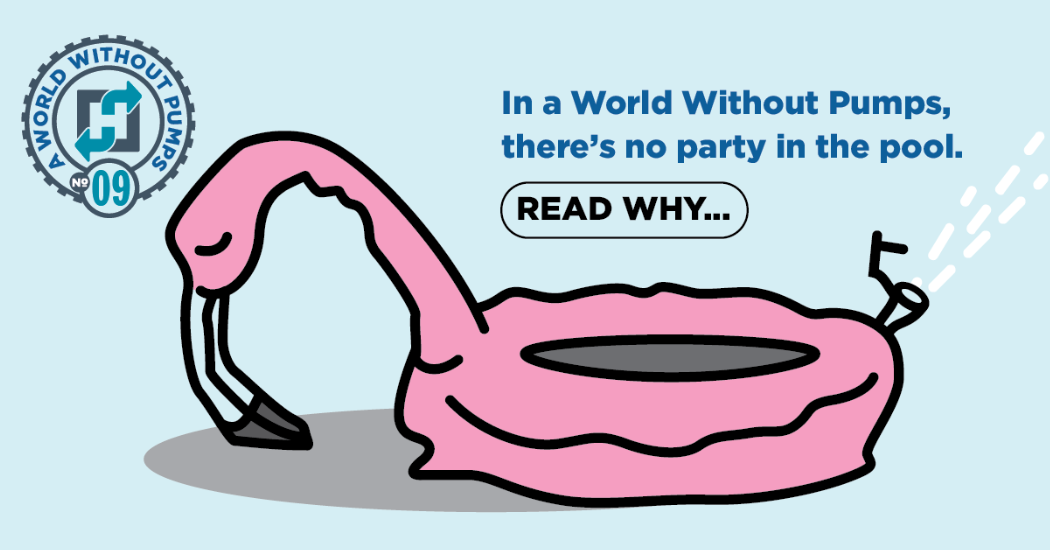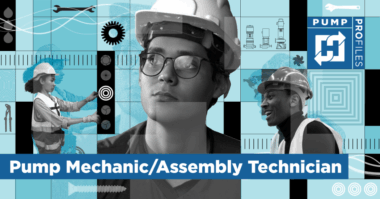Pumps for Fun
In a world without pumps, the favorite floatie you use to keep you safe and relaxed in the pool would shrivel up lifelessly.
Pumps deliver more than simply the essence of life in our homes, cities, businesses and agriculture. In many places and many ways, they also make it possible for us to enjoy our recreation and hobbies and to experience beauty in leisure time. Here are just some of the ways pumps add to the richness of our lives.
In and Around the House
A lot of the things we do for enjoyment at home wouldn’t be possible without pumps. If you have an in-ground swimming pool at your house with all the amenities, or even a simpler above-ground circular pool, a pump serves as an essential filtration system. In a complete system, the pump circulates water from the pool out of the skimmer and main drain, then through a filter before it returns the water back to the pool through the main returns. These pumps include a motor, impeller and housing containing a strainer basket to collect debris.
Hot tubs and spas also require pumps to operate. In a hot tub, the main purpose of the pump is to circulate water effectively while constantly heating and filtering the water. Hot tub pumps are working practically all the time and operate at a high rate of speed, and they are constantly pumping out water loaded with chemicals.
Most spa pools have both a circulation pump and a booster pump. The circulation pump operates continuously to move water slowly throughout the spa system. Constantly moving the water enables it to be consistently heated, filtered thoroughly by the filtration system and sanitized and treated evenly. The pump operates at a low RPM and is generally quiet. A booster pump increases the flow rate of water in the spa. These are used most often in larger spa systems like swim spas, where the water has a longer distance to travel.
Out and About
Whether you are away on vacation or just out for a day or evening of fun, pumps are likely to play an unseen but important role in your enjoyment.
Water parks across the country are full of ways to have fun, with centrifugal and jet pumps providing the needed water flow and pressure. These huge facilities, often covering more than a hundred thousand square feet, include both indoor and outdoor attractions such as water slides, surfing simulators and artificial rivers, all made possible by pumps.
Las Vegas has an array of water features of all types, including waterfalls and fountains, both inside and outside of casinos. One such indoor casino waterfall uses eight pumps, regulated to produce the desired fall effects. This indoor water feature provides the backdrop for an exclusive luxury bar and lounge. The system uses horizontal centrifugal pumps, each driven by an electric motor and variable frequency drive.
If amusement park rides thrill you, thank the hydraulic pumps used on many of them to provide a safe power source. Most rides take you into dangerous experiences without compromising your safety. Hydraulic power is the most preferred power source here, because it provides accurate control and smooth operation while ensuring the safety of riders. Some common rides include the Ferris wheel, roller coaster, flight simulators, drop tower, and others.
When you take the family to the zoo or aquarium, there are pumps working behind the scenes. They circulate the water that keeps the zoo’s polar bears cool and the seals happy. They also operate the pressure washers that are used to clean cages and other areas. Beautiful aquariums couldn’t exist without pumps that keep water fresh, filtered and flowing. Most large public aquariums use centrifugal pumps to maintain stable water temperatures and provide the necessary filtration.
Many parks and public gardens include fountains that create crystal beauty and the peaceful sound of splashing water. Some even put on a show, with streams of water jumping across a plaza in timed, controlled patterns. Pumps make it all possible.
When you’re cruising on a lake with a jet ski or jet boat, a pump produces a water jet that propels and steers the machine. A jet ski pump includes an impeller and a wear ring, that are nestled in a metal pump housing. A jet nozzle on the rear end of the pump increases the velocity of the water and controls the direction of the waterjet. The system on a jet boat is similar, with an intake, a nozzle, and a reverse bucket. When you start the engine, it spins the pump’s impeller to move water out the exit nozzle. To steer the boat, the nozzle is moved left or right. The reverse bucket controls the jet boat’s forward or reverse direction.
When you visit your local brew pub, raise a glass to the pumps that bring you your beer. Both large commercial and smaller craft breweries use sanitary pumps to transport liquids during the beer-making process. Either centrifugal or positive displacement pumps may be used, depending on their place in the process. A centrifugal pump transfers kinetic energy to a liquid in the form of velocity which is converted to pressure in a collector or casing. A positive displacement pump transfers a set volume of liquid from the inlet to the outlet in each rotation or stroke of the pump. Even at your favorite coffee shop, the espresso machines require a pump to create the pressures necessary to extract the espresso. Most commercial espresso machines rely on a rotary vane pump, which consists of a brass rotary vane pump head and an electric motor to turn the pump.
Check out the other World Without Pumps!
Learn more from the Hydraulic Institute.




